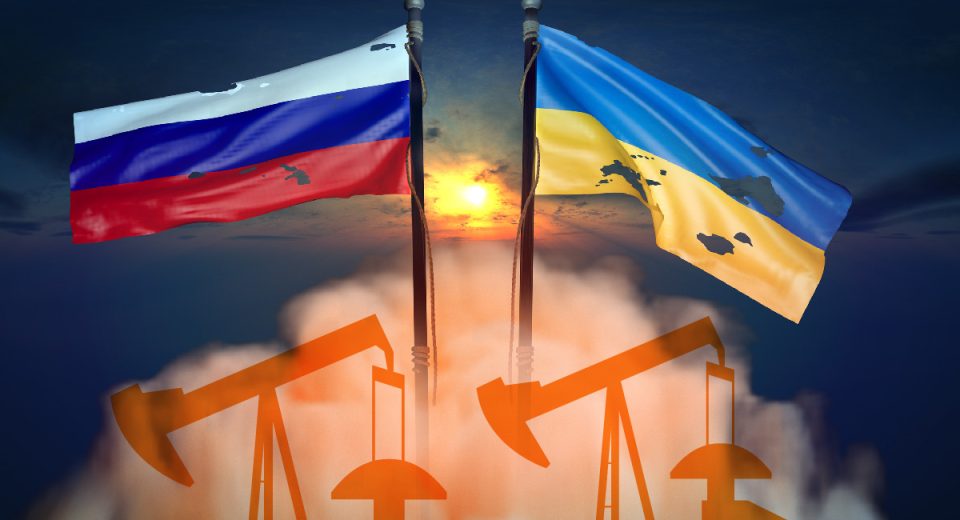The World Bank has a bearish outlook for commodities in general for 2025, expecting global commodity prices to fall to a five-year low amid “an oil glut that is so large that it is likely to limit the price effects even of a wider conflict in the Middle East.” But its Commodity Markets Outlook report also says that gold prices “are likely to remain elevated in 2025.”
Worried how this will impact your commodities trading experience? Remember that uncertainty and volatility can be good for traders because they create abundant opportunities. Discover the factors that will move commodity prices in 2025 and ways to navigate bearish markets.
What Will Move the Commodities Markets in 2025?
Commodities is an assorted basket of assets, each with distinct influencing factors and demand-supply patterns. Here’s a look at what to expect of the most popularly traded commodities.
Oil
The oil market is forecasted to remain volatile while trending downwards. JP Morgan forecasts a whopping 1.3 million barrels per day (mbd) surplus. Analysts at the financial services firm expect Brent to trade at around $73 per barrel and WTI at $64/barrel.
While OPEC+ has succeeded in convincing Saudi Arabia, Iran, Venezuela and, possibly, Russia to continue production cuts, such restrictions may fail to lift prices. Trump’s “drill baby drill” agenda to curtail inflation is expected to create a supply surplus. The World Bank believes that the surplus may “mute the effects” of even a wider conflict in the Middle East. Consequently, supply chain risks are less likely to influence investor sentiment in keeping oil prices elevated. The adoption of EVs and LNG-powered trucks surged to 50% in China in 2024. An increasingly widening transition to EVs and hybrid vehicles, along with the push for renewables, is expected to continue to dampen oil demand.
Natural Gas
The price of US natural gas is anticipated to surge by 55% in 2025, rising another 9% in 2026. However, competitive demand from Asia is likely to keep Liquid natural gas (LNG) prices in the EU under pressure, which may rise by 7% in 2025 while tumbling by almost 9% y-o-y in 2026 due to stagnating demand.
LNG prices remained under pressure through 2024 due to subdued global economic growth. As markets remain tight, the demand-supply balance may help LNG recover from the 2024 slump. Tailwinds from geopolitical conflicts, natural disasters and colder-than-usual temperatures may support natural gas prices in the short term.
Downward risks from weaker global demand, especially in East Asia (believed to be the growth engine for the global economy in the coming years), may be sustained through 2025 and 2026. Competition between the US and Russian production to fulfil the demand may restrict price uptick.
The metals market is broadly classified as base metals, precious metals and critical minerals (rare earths). Each category is set to perform independently of the others, creating tremendous opportunities for commodities trading.
Base metals include iron, copper, zinc, nickel and aluminium. Among these, iron and aluminium are expected to remain flat, albeit with some volatility. However, manufacturing growth in East Asia may generate upward momentum. Copper and nickel are forecasted to rebound in 2025, due to their importance in energy transition, such as for EVs, grid infrastructure and renewable power generation systems.
The demand for critical minerals, such as lithium, may remain depressed due to concerns about the environmental impact of mining them and trade restrictions. This will put downward pressure on prices.
The precious metal segment includes gold, silver, platinum and palladium. Gold and silver are considered safe havens and their demand for industrial needs could support prices.
Demand pressure from central banks pushed gold prices to all-time highs in 2024. However, elevated prices may dampen demand in 2025. The World Bank anticipates that gold price will recede from here with a 1% y-o-y decline in 2025 and 3% in 2026. Notably, this is in contrast to the opinion of JP Morgan and ING, with both predicting the yellow metal to approach $3,000 in 2025. Commodity traders can expect volatility as diverging opinions point to divided investor sentiment. This means more trading opportunities.
Silver, on the other hand, is in a supply deficit. This is set to drive prices higher through 2025. Being a key metal for PV cells, its demand is set to increase in the coming years. Increased supply from Canada, Peru, Russia and the US and recycling output are unlikely to balance demand and the white metal could see upside potential of 7% y-o-y in 2025 and 3% y-o-y in 2026.
Trading Commodities with CFDs
Did you know that despite massive growth in gold and silver, the World Bank’s commodities index declined by 3% y-o-y in 2024? Many factors, such as geopolitical tensions, demand, supply chain disruptions, etc., give rise to volatility in the commodity markets. These present opportunities for trading commodities.
Contracts for difference (CFDs) are a popular instrument to trade in volatile markets. This is because you can take advantage of both rising and falling prices. Another advantage of trading with derivatives is that you can trade on margin.
This amplifies your purchasing power, allowing you to explore more opportunities. However, margin also amplifies potential loss and profit. Therefore, managing risks is paramount when using CFDs for commodities trading.
CFDs can be used to trade indices as well. This provides you broader exposure to the commodities of your choice.
To Sum Up
- The World Bank expects commodity prices to drop to the 2020 levels in 2025.
- The surplus in oil inventories is set to exert downward pressure on the oil markets.
- Natural gas will remain volatile as the markets try to achieve demand-supply equilibrium.
- While gold may lose its sheen in 2025, while silver is set to shine brighter.
- Trading commodities via CFDs offers opportunities to trade both rising and falling markets.
- Risk management is paramount while trading on margin via CFDs.
Disclaimer:
All data, information and materials are published and provided “as is” solely for informational purposes only, and is not intended nor should be considered, in any way, as investment advice, recommendations, and/or suggestions for performing any actions with financial instruments. The information and opinions presented do not take into account any particular individual’s investment objectives, financial situation or needs, and hence does not constitute as an advice or a recommendation with respect to any investment product. All investors should seek advice from certified financial advisors based on their unique situation before making any investment decisions in accordance to their personal risk appetite. Blackwell Global endeavours to ensure that the information provided is complete and correct, but make no representation as to the actuality, accuracy or completeness of the information. Information, data and opinions may change without notice and Blackwell Global is not obliged to update on the changes. The opinions and views expressed are solely those of the authors and analysts and do not necessarily represent that of Blackwell Global or its management, shareholders, and affiliates. Any projections or views of the market provided may not prove to be accurate. Past performance is not necessarily an indicative of future performance. Blackwell Global assumes no liability for any loss arising directly or indirectly from use of or reliance on such information here in contained. Reproduction of this information, in whole or in part, is not permitted.





